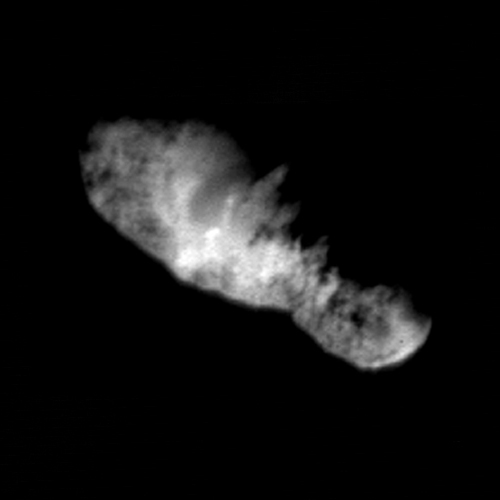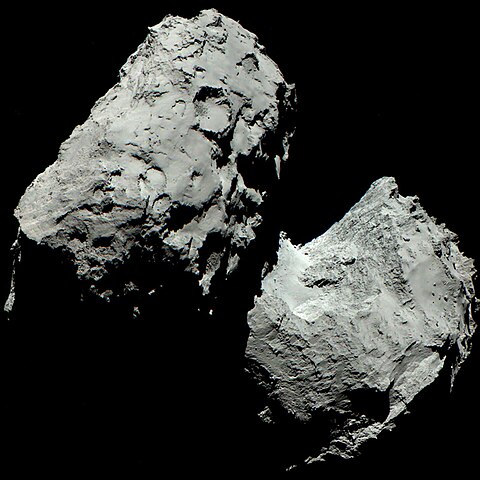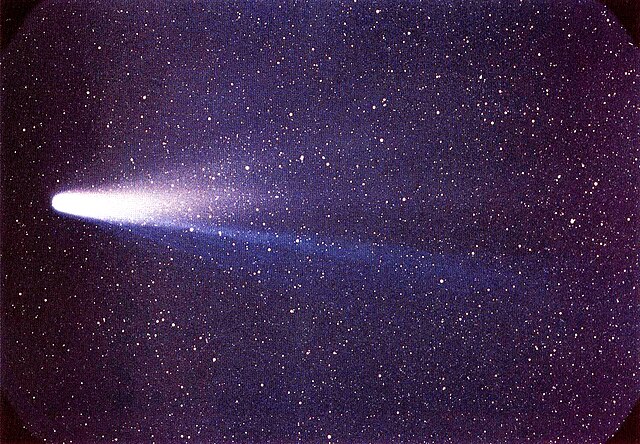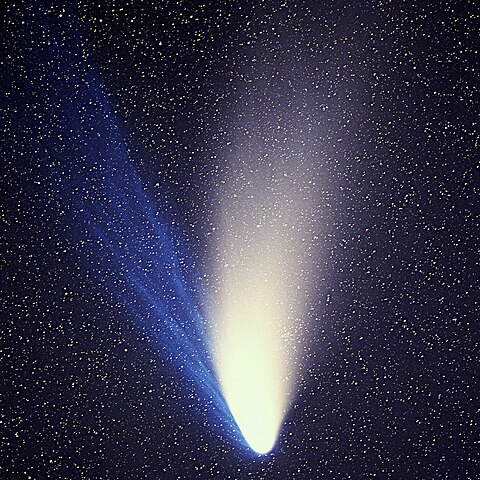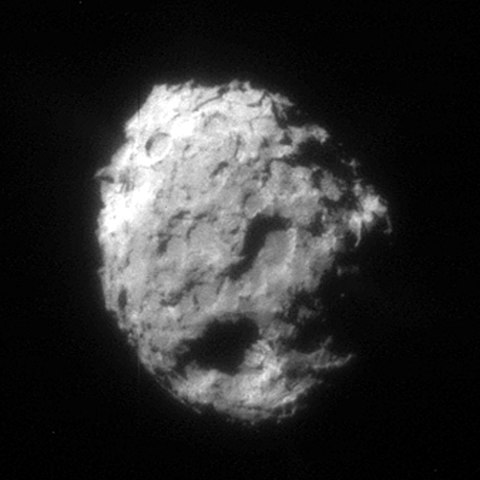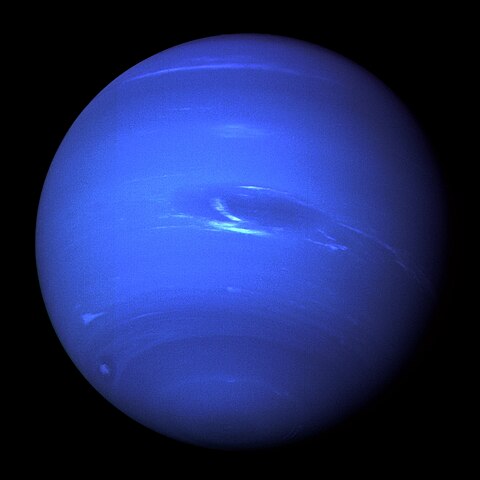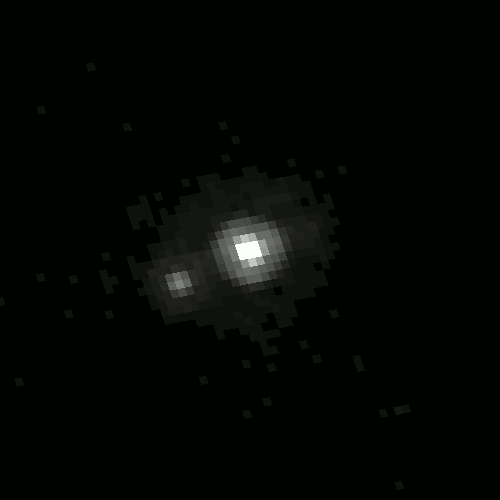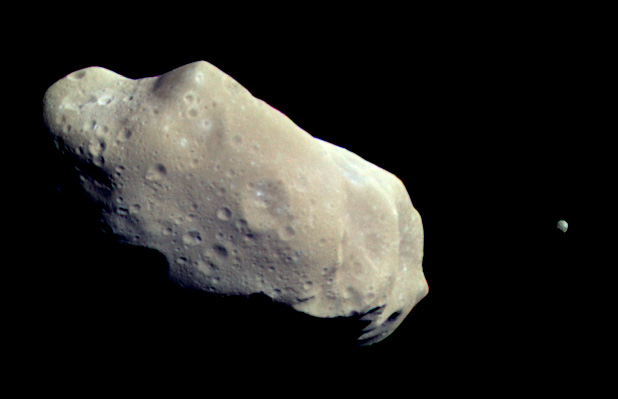1 day / second
0.5 AU
Borrelly's Comet (19P/Borrelly)
Comet
A short-period comet discovered in 1904 that orbits the Sun every 6.9 years and was the second comet ever photographed up close during NASA's Deep Space 1 flyby in 2001.
Key Facts
learn more | Wikipedia |
mass | 2.0000e+13 kg |
radius | 2.4 km |
hill radius | 292.42 km |
semi-major axis | 3.607 AU |
eccentricity | 0.638 |
inclination | 29.319º |
longitude of the ascending node | 74.301º |
argument of periapsis | 351.862º |
orbital period | 6.85 years |
discovery date | December 28, 1904 |
discovered by | Alphonse Borrelly |
discovery location | Marseille |
dimensions | 4.8 kilometers in diameter |
albedo | 0.022 |
material composition | Dark, carbon-rich surface materials |
Spacecraft Visits
Deep Space 1
Flyby
Launched in 1998, visited in 2001
Deep Space 1 captured the best images ever taken of a comet nucleus during its September 22, 2001 flyby of Borrelly, passing within 2,200 kilometers of the comet while revealing its dark, irregular surface features.
